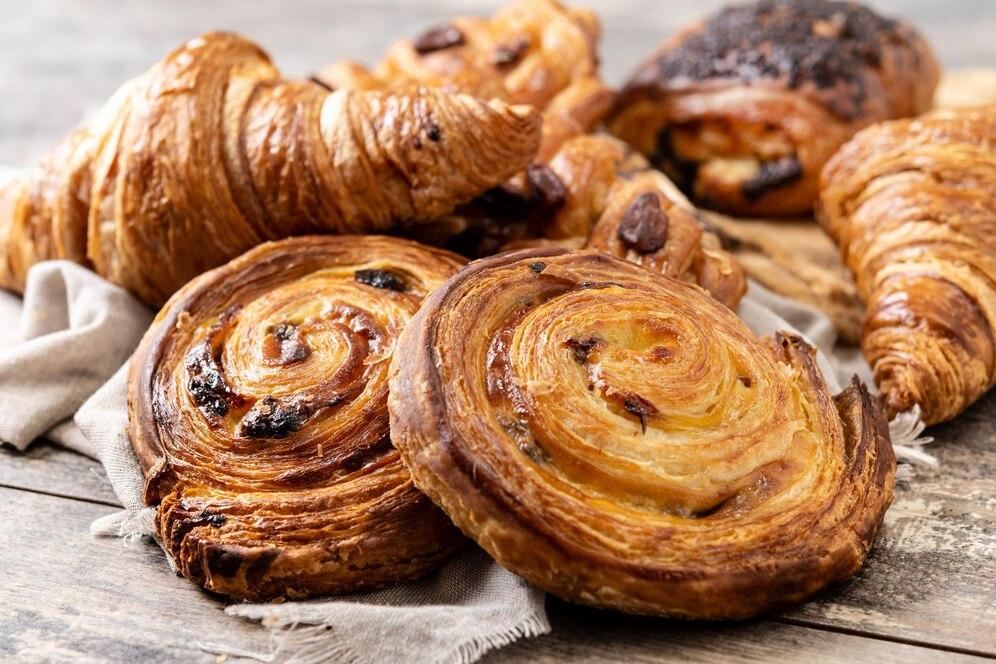The viennoiserie market, known for its rich, buttery pastries like croissants, Danish pastries, and pain au chocolat, has evolved significantly over the years. Driven by consumer demand for indulgent yet convenient baked goods, the market landscape is dynamic, with several factors influencing its growth. In this article, we will explore the key elements shaping the viennoiserie market, including current trends, market players, and the opportunities and challenges businesses face within this competitive industry.
1. Growing Demand for Premium and Artisanal Products
In recent years, consumers have become more discerning about the quality and origins of the food they consume. This trend is particularly noticeable in the viennoiserie market, where there is an increasing demand for premium, artisanal products. Consumers are willing to pay more for pastries that are made with high-quality, locally sourced, and organic ingredients. This has led to a surge in the popularity of artisanal bakeries and cafes offering freshly baked, handcrafted viennoiserie items.
Artisanal producers often use traditional baking techniques, creating a distinct flavor profile that mass-produced pastries may lack. As a result, premium and artisanal viennoiserie items are attracting a growing consumer base, particularly among food enthusiasts who prioritize authenticity and quality.
2. Café Culture and Global Expansion
Café culture has become a global phenomenon, and with it, the demand for viennoiserie products has grown. Coffee shops, both independent and chain stores, play a crucial role in the distribution of viennoiserie items. Major coffee chains such as Starbucks, Dunkin’, and Costa Coffee have successfully incorporated viennoiserie pastries into their menus, making them an essential part of the modern café experience.
The rise of café culture has extended beyond Western countries, with markets in Asia-Pacific, Latin America, and the Middle East also contributing to the growth of the viennoiserie sector. In countries like China, India, and Brazil, the increasing urbanization, rising disposable incomes, and changing eating habits are driving the demand for café-style baked goods, including viennoiserie.
3. Health and Dietary Considerations
As consumers become more health-conscious, there has been a noticeable shift toward healthier versions of traditional viennoiserie products. In response to growing concerns about sugar and calorie intake, bakeries are introducing gluten-free, low-sugar, and plant-based alternatives. These offerings aim to cater to consumers who still want to enjoy indulgent pastries while adhering to dietary restrictions or health-conscious choices.
However, it is important to note that despite these innovations, traditional viennoiserie remains a significant part of the market. The challenge for producers lies in striking the right balance between catering to health trends without compromising on the beloved taste and texture that make viennoiserie products so popular.
4. Competitive Landscape and Key Players
The viennoiserie market is highly fragmented, with a mix of local bakeries, large multinational chains, and supermarkets all vying for consumer attention. In addition to the major coffee chains, established players like Panera Bread, Pret a Manger, and Tim Hortons continue to dominate the market in various regions. These brands leverage their extensive distribution networks, well-known brands, and marketing strategies to attract a wide customer base.
On the other hand, artisanal bakeries, which emphasize traditional recipes and high-quality ingredients, are gaining popularity. Many consumers prefer to support smaller, local businesses that offer unique, freshly baked pastries. The competitive pressure between large chains and independent bakeries is intensifying, with both sides striving to offer the best quality, pricing, and customer experience.
Supermarkets and grocery stores also play a significant role in the distribution of viennoiserie products. Many offer pre-packaged or frozen viennoiserie, which allows consumers to enjoy their favorite pastries at home with convenience. These products are particularly appealing to busy consumers who still desire high-quality baked goods without visiting a café or bakery.
5. Supply Chain and Distribution Challenges
As the demand for viennoiserie products increases, so does the pressure on the supply chain. The cost and availability of key ingredients like butter, sugar, flour, and eggs are critical to the production of viennoiserie. Global supply chain disruptions, rising costs, and fluctuating agricultural yields can impact the production and pricing of these goods.
Additionally, maintaining freshness in viennoiserie products during distribution is crucial, especially for mass-market retailers and coffee chains that aim to provide high-quality pastries. Bakeries and producers are increasingly relying on technology and efficient supply chain management to ensure product consistency and quality, while also controlling costs.
6. Opportunities and Future Outlook
The viennoiserie market is expected to continue growing, driven by consumer demand for premium products, innovative offerings, and a strong café culture. Key opportunities for businesses include expanding into emerging markets where disposable income is rising and consumers are becoming more exposed to Western-style food trends. Additionally, introducing new variations of traditional viennoiserie, such as plant-based or gluten-free pastries, presents opportunities for market differentiation.
With the increasing focus on sustainability, bakeries and brands that adopt eco-friendly practices, such as sourcing organic ingredients or reducing waste, will appeal to environmentally conscious consumers. This is likely to be a key differentiator in a competitive market.
Conclusion
The viennoiserie market landscape is evolving, influenced by consumer preferences for premium, healthy, and artisanal products, as well as the growing café culture worldwide. While competition is fierce, there are ample opportunities for growth in emerging markets, innovation in product offerings, and the adoption of sustainable practices. For businesses to succeed, they must be agile, staying ahead of consumer trends and balancing the demand for quality, convenience, and health-conscious options. The future of the viennoiserie market looks promising, with continued growth driven by these dynamic forces.



